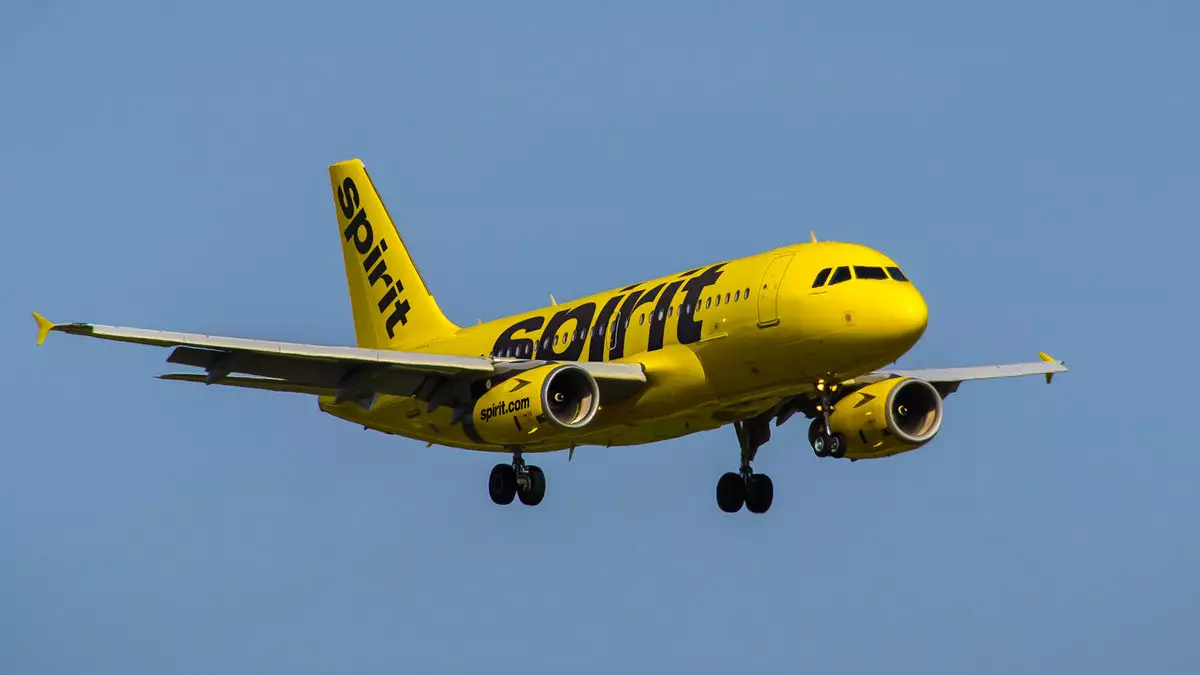On Friday, Spirit Airlines’ stock experienced a significant drop following a report from the Wall Street Journal indicating that the airline may be considering a Chapter 11 bankruptcy filing. This unsettling news comes in the wake of discussions between Spirit and its bondholders regarding the airline’s financial future. Although Spirit Airlines declined to formally comment on the report, the situation highlights the precarious position in which the airline currently finds itself.
Spirit Airlines’ CEO, Ted Christie, recently addressed the situation during the company’s earnings call. He characterized the dialogues with bondholder advisors as “productive,” yet he refrained from elaborating on the specifics, emphasizing that discussions would continue without speculation on potential outcomes. The reserved tone from the leadership raises questions about the extent of the airline’s financial difficulties and whether its efforts to stabilize its debt situation are genuinely progressing.
The airline faces a pressing deadline of October 21 to refinance $1.1 billion in loyalty program-backed debt. This looming financial obligation underscores the critical condition of the airline’s balance sheet, which reported a staggering long-term debt exceeding $3.1 billion by the end of the second quarter this year. The urgency to address these liabilities has led to discussions about a possible Chapter 11 filing, albeit the Wall Street Journal suggests that such an action isn’t imminent.
Nevertheless, the narrative around Spirit Airlines’ liquidity troubles comes at a time when the airline sector is gradually recovering from the COVID-19 pandemic. The airline has experienced substantial operational losses, including a reported $496 million loss in 2023 alone. Coupled with evolving consumer preferences leaning towards premium flying experiences, Spirit Airlines finds itself in a challenging situation, struggling to attract travelers who now favor more luxurious options.
In an attempt to rebound, Spirit previously attempted to merge with JetBlue, a strategic move aimed at fortifying its market position. However, regulatory hurdles posed by the U.S. Department of Justice stymied that initiative earlier this year. This setback has forced the airline to implement austerity measures, leading to significant route cuts. According to analysis from Deutsche Bank, Spirit has already eliminated 50 to 60 routes slated for November and December, a drastic move reflecting the airline’s attempt to mitigate fiscal losses.
As the date for refinancing approaches, the airline is exploring out-of-court options as it navigates a complex financial landscape. The decision to focus on restructuring rather than immediate bankruptcy signifies that while Spirit Airlines is grappling with serious challenges, there is a semblance of hope for a careful financial turnaround.
As Spirit Airlines continues its discussions with bondholders and evaluates its available options, the wider implications for the airline industry remain to be seen. While many companies are experiencing a rebound in travel demand post-pandemic, Spirit’s struggles serve as a reminder of the ongoing challenges that persist within the sector. The airline’s strategic decisions in the coming months will likely prove crucial in determining its financial viability and overall recovery.
In this pivotal period, industry observers will undoubtedly be watching closely to see if Spirit Airlines can navigate through its financial turbulence and emerge as a stronger player in the competitive landscape of air travel.


Leave a Reply